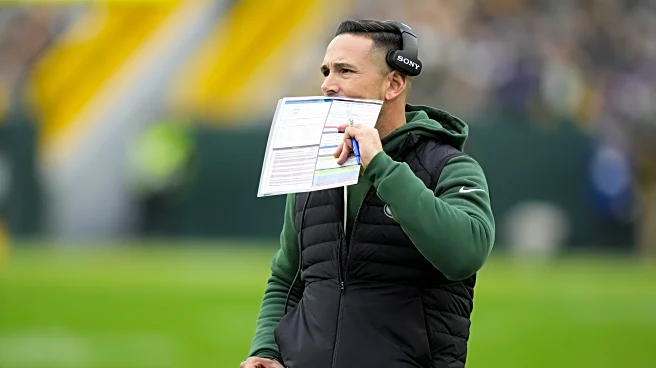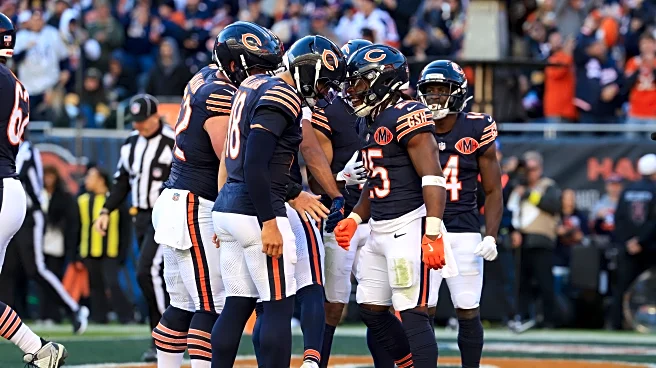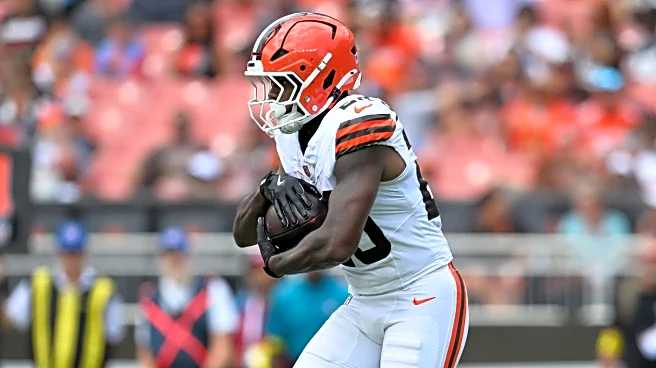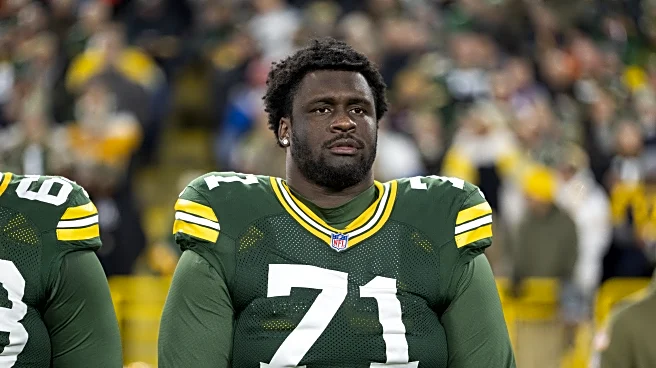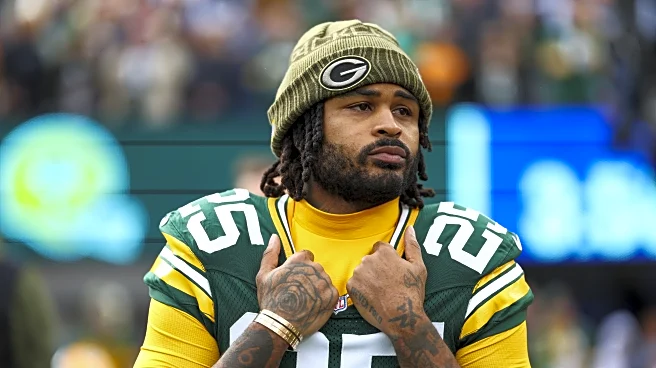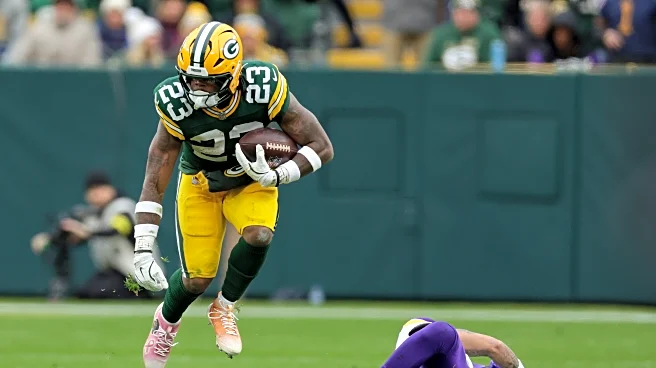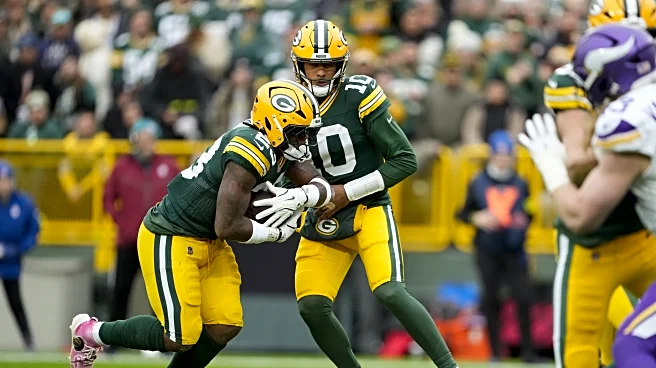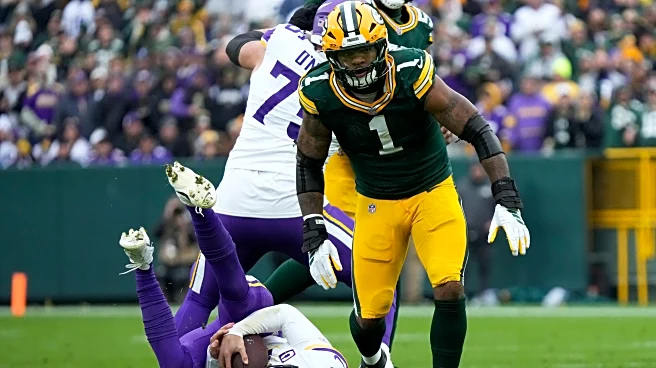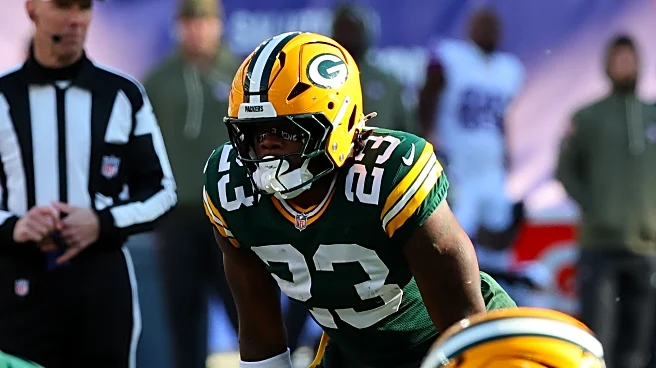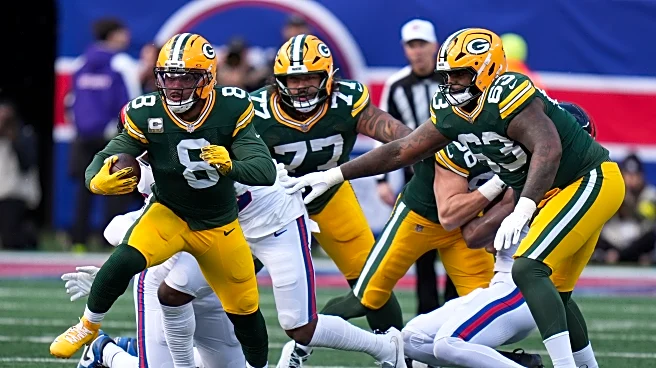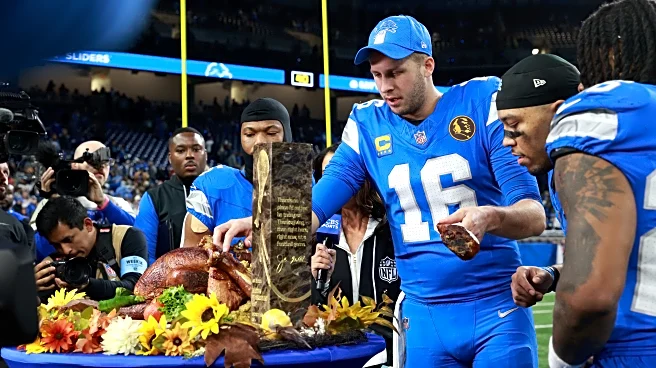The Green Bay Packers strolled to a win over the Minnesota Vikings that only saw their defense play a total of 44 plays, so the team should be relatively rested for their upcoming game against the Detroit Lions on Thanksgiving. Let’s take you through all of the changes on the team’s depth chart, along with how the team responded to some injuries in the game.
As always, cells contain players’ weekly snap counts. These do not include spikes, kneels or plays with pre-snap penalties (like a false start)
but do include plays with post-snap penalties (like holding). Cells in red mean that a player was unable to suit up for action due to injury. Cells in yellow mean that a player was unable to finish the game due to injury. Cells in black mean that a player was a healthy scratch for that week.
Offensive Personnel

As we wrote about last week, the Packers’ post-Tucker Kraft plan to play lighter personnel ended with their loss to the Philadelphia Eagles. Since then, the team has been playing much heavier personnel on offense.
For example, here’s the rate of Green Bay playing three wide receivers over the last three weeks:
- Week 10: 86 percent
- Week 11: 53 percent
- Week 12: 33 percent
If it’s up to Matt LaFleur, the Packers are going to be very heavy and run the football. Keep that in mind moving forward.
Quarterback

Jordan Love didn’t have to miss any snaps with his shoulder separation, but Malik Willis did get in against the Vikings in garbage time. I want to point something out here that I noticed on film. Because Love wasn’t able to hand off with both hands, the Packers weren’t able to throw some of the run alerts that they usually do during games. With Love only being able to hand off with his right hand, the way he’s having to have to turn to give the ball to his backs, at times, takes his eyes away from the read. There were some yards left on the field on Sunday, but there’s not much you can do about it until Love’s shoulder is fully healed.
Running Back

Chris Brooks saw an uptick of snaps this week, compared to last week’s effort when Emanuel Wilson played 35 snaps to Brooks’ 5. There’s pretty huge run-pass splits between the two backs right now. Wilson ran the ball 28 times on 36 total snaps (78 percent) compared to Brooks running the ball just 8 times on 29 snaps (28 percent).
Maybe the team can live like that, but it’s a huge tell at the moment.
Beyond the tailbacks, it’s worth mentioning that tight end Josh Whyle played seven snaps as a fullback against the Vikings, more than any other player in any other week this season. The team seems to like him in that role.
Receiver


With Jayden Reed and Matthew Golden out, Dontayvion Wicks was the primary slot receiver in this game, as expected. Until further notice, just assume that the primary outside receivers for the team are going to be Romeo Doubs and Christian Watson with everyone else mixing in on the outside or in the slot. Whenever Jayden Reed comes back, that should push Golden and Wicks down into WR4/5 roles.
Tight End

There’s a lot going on here. First of all, John FitzPatrick is clearly the team’s top option as the Packers’ inline tight end. Luke Musgrave’s numbers here are inflated, as he played six snaps in garbage time with Malik Willis under center to end the game, along with running back Chris Brooks, offensive lineman Darian Kinnard (playing tight end), receiver Malik Heath and receiver Savion Williams.
It’s probably not a great sign for Musgrave moving forward that he’s being looked at as a player to feed garbage times snaps to, especially over Josh Whyle, who was still on the practice squad a couple of weeks ago.
Kinnard played 20 snaps at tight end in this game. Nearly a third of the Packers’ offense featured six offensive linemen on the field together. Green Bay is exhausting all options to make sure their running game is at least competent.
When the team is in 11 personnel, with three receivers, one tight end and one back on the field together, here’s what the tight end splits looked like versus the Vikings:
- John FitzPatrick: 9 snaps
- Josh Whyle: 8
- Luke Musgrave: 3
- Darian Kinnard: 1
Offensive Line





The Rasheed Walker (left tackle), Aaron Banks (left guard), Sean Rhyan (center) and Zach Tom (right tackle) played all snaps in this game, but Jordan Morgan and Anthony Belton did rotate at right guard. This was the first time all season that Belton played in a guard spot all year, after offensive line coach Luke Butkus admitted that Belton had begun to practice at guard after only playing tackle throughout training camp and the preseason.
Morgan was given the first and third drives of the game, with Belton playing the second drive and the entire second half. If Morgan’s days at guard aren’t over, they’re numbered. Belton should have always been a guard, and Morgan should have always been a tackle. The move of Rhyan to center has only made this more clear.
Defensive Personnel

The Packers opened up the game against the Vikings with their 3-4 defense (really a 5-2 if you want to think of it that way), which had only previously made an appearance against the Philadelphia Eagles. The message was clear: We know you want to run it, and we have tools to stop the run. The Packers only had to get back into that 3-4 look once, on the drive where they forced the Vikings to turn the ball over on downs after back-to-back failed short yardage runs.
Outside of that note, it was really a tale of two halves. Prior to the two-minute warning in the first half, Minnesota was playing heavier personnel, with at most two receivers on the field, most of the time. To combat that, the Packers played a base defense (4-3 or 3-4) 17 of 23 times (74 percent). Starting with the two-minute warning, though, when the Vikings clearly began to chase points, Green Bay only played base defenses on 3 of the final 21 plays of the game (14 percent). It truly was like two different offenses and defenses playing each other, split by the two-minute warning in the first half.
Defensive Tackle

The big one here this week is that Karl Brooks only played four defensive snaps, the last of which was to start the second quarter. Brooks went down, but returned against the New York Giants after the injury. He was on the injury report all week and was actually listed as questionable going into this Vikings game.
I believe the team just had him on a strict pitch count in Week 12. They didn’t want to seem to use him if they didn’t have to. Despite not playing defense after the first play of the second quarter, he did get on the field a couple of times on special teams after that.
The other information worth sharing is that Warren Brinson out-snapped Nazir Stackhouse, which has flipped from Week 11. Here are the Brinson and Stackhouse snap counts in the games that they’ve both been active for:
- Week 6: Brinson 20, Stackhouse 5
- Week 7: 34, 15
- Week 10: 9, 4
- Week 11: 5, 13
- Week 12: 21, 3
In this game, Brinson got a lot of looks in the team’s three defensive end Cheetah packages as the lone defensive tackle on the field, plus other opportunities in nickel sets in obvious passing downs. In short, he played the Brooks role, with Brooks only playing four snaps in this game.
Defensive End

There’s not that much to note here, other than that Lukas Van Ness was on a big pitch count. I’ve had a lot of questions able whether Van Ness injured himself during the game, but I don’t believe that’s the case. While Van Ness did play five of his six snaps in the first 20 defensive plays of the game, he was on the field for a fourth-quarter drive starter. It’s also worth mentioning that he didn’t play a single special teams unit on Sunday, despite typically being a multi-phase starter.
In short, I just think he was on a pitch count.
Linebacker

As expected, Isaiah McDuffie took over as the team’s starting Mike linebacker with Quay Walker out. This pushed Ty’Ron Hopper into the third 4-3 linebacker role, which previously was McDuffie’s job. McDuffie did well against the Vikings, but Minnesota couldn’t pass the ball. McDuffie’s biggest weakness is his ability to play in space, not his ability to fit the run.
Cornerback

I’m midly surprised that it was Kamal Hadden in for Keisean Nixon, who dropped out with a stinger, and not Bo Melton, who had been getting snaps over Hadden throughout the summer. This was the first time that the depth at the cornerback position was stressed, though.
Depending on the status of Nate Hobbs and Nixon this week, I could see the team adding another cornerback to the gameday roster from the practice squad. The position was already thin, before the Nixon injury. I also wouldn’t make too much of an evaluation about what Hadden is or isn’t off of this game, considering how bad of a quarterback J.J. McCarthy is.
Shoutout to Hadden, though, who got his first regular-season NFL snaps on defense just a couple of weeks after a three-week stretch where he was a healthy scratch. That’s a pretty incredible change of circumstance for a player who was considered to be on the roster bubble a short time ago. Hopefully he can make the most of his opportunity.
Slot Defender

It’s all Javon Bullard in the slot, and it will continue to be that until Nate Hobbs comes back from injury. The only snaps that Kitan Oladapo has taken in the slot this year have been when the Packers have played two slot defenders in their prevent defense.
Safety

After five games of rotating in Evan Williams and Javon Bullard in 4-3 base looks, Williams finally played all of the team’s safety snaps for the first time since Week 6. Generally, bad things happen when Williams is taken off the field.
Against the Carolina Panthers, Bullard played two drives at safety: the only touchdown drives that Carolina had all game. Last week, against the New York Giants, Bullard’s lone drive at the position also led to a touchdown being surrendered. Meanwhile, Williams had the game-ending interception in Week 11. Just keep him on the field as long as he’s healthy. It seems like the Packers finally got that memo.


